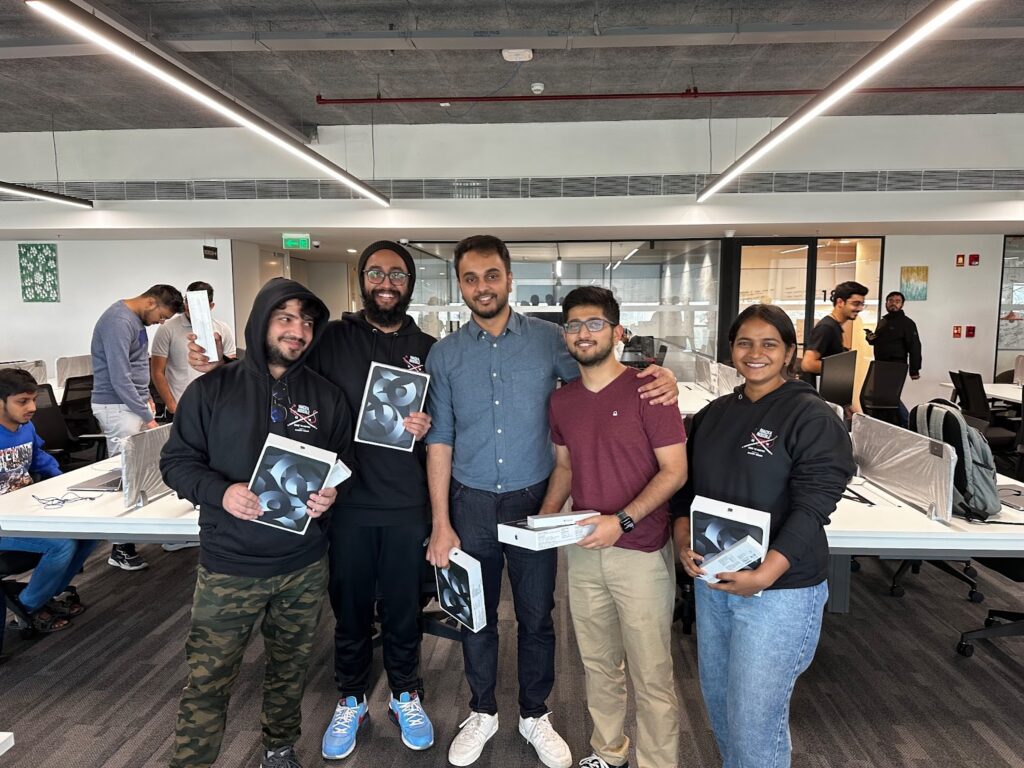
Introduction:
Step into the world of innovation and creativity with Zomato’s exhilarating 24-hour hackathon, Hack-a-Noodle 2022! This event brought together brilliant minds to craft extraordinary ideas and solutions, creating a dynamic platform for both external participants and Zomato’s tech team. Let’s dive into the remarkable story of Kimchi, an on-the-fly iOS UI rendering engine, born from the innovation showcased at this event.
A Thrilling Journey:
Hack-a-Noodle 2022 hosted two captivating dimensions. External participants showcased innovative projects, vying for prizes and potential job opportunities at Zomato. Simultaneously, Zomato’s internal tech team formed dynamic groups to tackle challenges head-on. Energized by a sense of purpose, participants embarked on a 24-hour journey of creativity, collaboration, and ingenuity. A multitude of brilliant ideas bloomed, turning aspirations into reality.
Introducing Kimchi:
Meet the winning team, a group of five exceptional minds from Zomato’s iOS team: Mehul Srivastava, Nakul Sakhuja, Rajesh Budhiraja, Archana Kumari, and Inder Deep Singh. Their masterpiece, Kimchi, represents a revolutionary leap in iOS UI rendering. An engine born from ingenuity, Kimchi empowers real-time rendering of UI elements, transforming the way we perceive app design.

Challenges Overcome:
Zomato’s UI ecosystem was supported by a standardized library called Sushi. While this ensured consistency, it posed limitations in terms of flexibility and speed. Enter Kimchi – a response to the need for real-time, backend-controlled UI rendering. The Hack-a-Noodle event provided the perfect platform to explore this possibility, leading to Kimchi’s inception.
Innovation in Action:
Amid the hackathon’s intense hours, the team embraced SwiftUI-inspired syntax to arrange UI elements. Using containers like hStack, vStack, and zStack, they orchestrated stunning visual compositions. Kimchi leveraged the power of UIKit, utilizing UIStackView for efficient stacking. The outcome was impressive: Kimchi’s first renderings closely mirrored existing screens, demonstrating its potential to revolutionize UI delivery.
The Ingenious Approach:
Kimchi’s structure is recursive, creating a hierarchy of KimchiViews. This architecture enables consistent UI features like padding, shadows, and gradients, streamlining maintenance. Furthermore, KimchiViews introduced a novel approach to data separation, enabling dynamic updates without increasing response size. This separation empowered Zomato to control UI from the backend, pushing the boundaries of app development speed.
Elevating Reusability:
Kimchi’s initial version faced a challenge in reusability, but innovation didn’t stop. The team devised a strategy that optimized dynamic data updates without resource-intensive processes. By meticulously organizing KimchiViews, managing references, and implementing a protocol for communication, the team unlocked reusability akin to traditional views. This efficiency boosted Kimchi’s performance, setting new standards for UI rendering.
Kimchi’s Impact and Future:
The impact of Kimchi was undeniable – it earned the prestigious recognition of Hack-a-Noodle’s winning idea. Beyond the hackathon, Kimchi was set to transform Zomato’s daily workflow. From efficient response management to seamless integration with backend systems, Kimchi promises a future where UI rendering is as dynamic as our ideas.
Conclusion:
The journey of Kimchi is a testament to Zomato’s commitment to innovation and excellence. With its groundbreaking on-the-fly iOS UI rendering capabilities, Kimchi emerges as a trailblazer in the realm of app design. The Hack-a-Noodle event sparked the fire of ingenuity, propelling Zomato’s tech future into uncharted territories. As we embrace the future, Kimchi stands as a symbol of Zomato’s determination to challenge norms and redefine the art of UI rendering.
Catch you later,
Niyati



